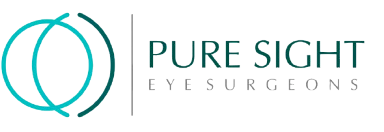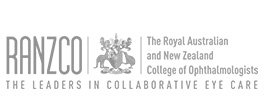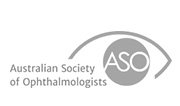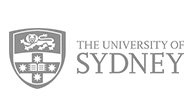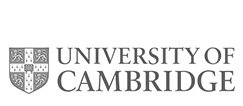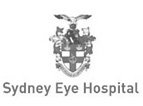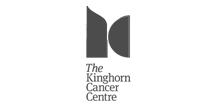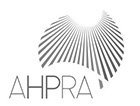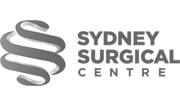Laser Vision Correction - LASIK (Laser in-situ Keratomileusis) and PRK (Photorefractive Keratectomy)
LASIK (laser in-situ keratomileusis) and PRK (photorefractive keratectomy are two widely used refractive eye surgeries to correct nearsightedness, farsightedness, astigmatism (improper curvature of the eye’s surface), and sometimes, presbyopia (loss of ability to focus on nearby objects).
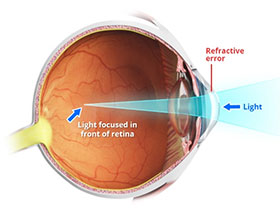
The surgery works by remoulding or reshaping the cornea (the transparent dome-shaped front part of the eye), allowing proper focusing of the light that passes through the cornea onto the retina (light-sensitive membrane at the back of the eye).
What are the pre-operative procedures?
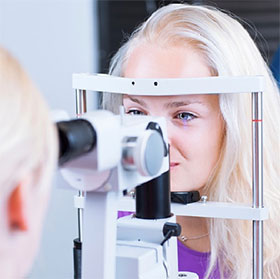
To prepare for your LASIK or PRK assessment you will need to temporarily cease wearing contact lenses and switch over to glasses for a week before the procedure, if using soft contact lenses, and longer if hard contact lenses.
Dr Chiu and her staff will review your medical and ocular history and perform eye scans. Dr Chiu will conduct a detailed eye examination to measure your spectacle prescription, corneal mapping, including shape, steepness, topography (contour map) and thickness.
In addition, wavefront-guided and topographic-guided technologies generate a detailed chart of your individual eye features, so your treatment can be customised. These advanced technologies are used as the standard of care by Dr Chiu.
How is the procedure done?
You will be seated in a reclining chair, and given medication to relax you. Eye drops will be instilled to numb your eyes, known as topical anaesthetic. You will be guided into the procedure room and Dr Chiu will talk you through the treatment. She will use a special instrument to keep your eyes open during the procedure. You will be asked to focus on a source of light in order to keep your eye fixed during the procedure.
The procedure will vary at this point depending on whether or not you are having LASIK or PRK. TO read more about LASIK . To read more about PRK
How is the LASIK procedure done?
During the LASIK procedure, Dr Chiu will then use a special laser, known as a femtoscecond laser, to cut a thin flap on the cornea, which remains attached by a hinge. This laser physically contacts the eye, and you may feel pressure on your eye for less than a minute, at which stage it also normal to temporarily lose vision. The LASIK flap will then be carefully and gently folded back and the underlying deeper corneal tissue will be remoulded, using a second laser, known as an excimer laser. Once the cornea is reshaped appropriately so that it properly focuses light onto the retina, your surgery will be completed by carefully folding the corneal flap back into place, where it will heal normally without the need for stitches. The entire procedure takes 30 minutes or less.
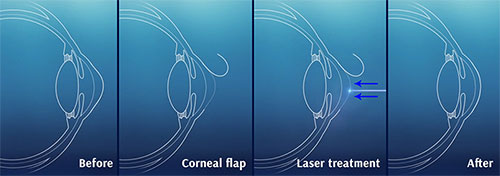
Please click here to read about the how PRK procedure is done
What are the tips for LASIK post-operative care, and what is the visual recovery?
Following the surgery, you can expect some irritation as your eyes may feel dry, and sometimes, watery. You will be given medications and eye drops to keep your eyes moist and to prevent pain and infection. Medicated eye drops routinely last 10 days and lubricating eye drops are recommended for 3 months. During the first week following surgery, it is important not to allow anything to get into the eye that is not sterile, for example tap water, and sweat from exercising. We recommend the simple measure of using swimming goggles in the shower. Swimming is not allowed for 2 weeks following surgery.
Please do not rub your eyes following LASIK procedure. You will use a clear shield over your eyes at night while sleeping for the first week. These measures protect the flap, which is delicate in the first week.
You may have blurred vision for the remainder of the day following your procedure, and most people have clear vision the first day after the procedure, with most improvement over a few days to a week. Healing occurs fairly rapidly.
Following the surgery, you can expect some irritation as your eyes may feel dry. You will be given medicines and eye drops to keep your eyes moist and to prevent pain and infection. You will use a clear shield over your eyes at night until they heal. You may have blurred vision for the remainder of the day following your procedure, and most people have clear vision the first day after the procedure, Healing occurs fairly rapidly.

You will follow up with Dr Chiu the day after your procedure and regularly periodically in the first year.
What are the advantages of LASIK?
LASIK has the following benefits:
- Over 10 million procedures worldwide with high rates of success
- Rapid visual recovery
- Minimal discomfort during recovery. It is common to temporarily feel a gritty sensation in the eyes following surgery
- No stitches or bandages are required
How is the PRK procedure done?
The eye is prepared in the same way as for the LASIK procedure . Then the cornea is treated with an alcohol solution or special brush that causes the thin top skin layer (epithelial layer) to dissolve. This is lifted or rolled away and the underlying corneal surface treated with the same excimer laser used in the second stage of the LASIK procedure. This laser applies the treatment, which is reshaping of the cornea. The eye is then covered with a special protective surgical contact lens, which is left on for 5 to 7 days while the skin layer regenerates itself.
What are the tips for PRK post-operative care, and what is the visual recovery?
You may experience some eye irritation and sensitivity to light for the first few days, which is normal. Dr Chiu will prescribe eye drops to control discomfort, inflammation and prevent infection. It is important to use the medicated eye drops as instructed. These are routinely prescribed for 2-3 months. Dr Chiu will see you 5-7 days following your surgery to remove the surgical contact lens, and check the healing.
Vision may be blurry initially, but improves gradually over a period of weeks to months. Dr Chiu recommends a week off work following the PRK procedure. During the early recovery phase, it is important not to allow anything to get into the eye that is not sterile, for example tap water, and sweat from exercising. We recommend the simple measure of using swimming goggles in the shower. Swimming is not allowed for 2 weeks following surgery.
During your recovery over the first month it is very normal to experience fluctuations in the vision as it improves.
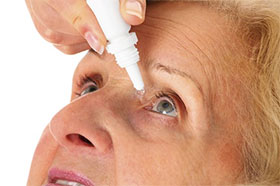
What are the risks of LASIK and PRK?
As with any surgery, laser eye surgery, such as LASIK and PRK carries risks, which include:
- Ectasia is a condition where the cornea becomes weak as a result of the laser treatment. This causes blurry vision, which may not be correctable with glasses or contact lenses, and further laser treatment cannot be performed. There are surgical procedures to improve the vision and ultimately corneal grafting may be required. Suitability tests prior to treatment aim to identify those patients at risk of ectasia, whereby alternative treatments will be discussed to avoid the risk of ectasia.
- Under correction or overcorrection. Laser treatments are very precise. The corneal healing after laser treatment is individual, and variation in healing can result in some residual refractive error, including astigmatism, due to under correction or overcorrection. This may mean a further fine-tuning or enhancement procedure, usually performed at 6 months. Only 5% of patients experience this variation in healing.
- Dry eyes: Temporary decrease in tear production can be expected after LASIK or PRK for up to six to twelve months. Additional treatments or procedures may be required. Dry eye is the most common side effect of laser treatment and some patients will have long terms issues with dry eye.
- Flap-related complications: These include wrinkling or dislodgement of the flap, epithelial ingrowth under the flap, or inflammation under the flap.
- Vision abnormalities: You may experience glares or halo which is usually temporary but occasionally can be longstanding. Custom treatments have reduced this side effect. If persistent corneal haze develops, additional drops may be prescribed, however vision may be affected permanently.
- Dr Chiu will personally discuss the potential complications with you.
Conditions such as rheumatoid arthritis, immunodeficiency, pregnancy, pre-existing dry eyes, unstable vision, and abnormal shape of the cornea can increase the risks associated with LASIK and/or PRK. Dr Chiu and her staff routinely perform a comprehensive and thorough assessment, and will advise the safest procedure for your eyes.
Things to bring to your laser vision correction appointment
- Glasses and/or contact lenses. Please ensure you cease wearing your contact lenses a week before your assessment, or longer if wearing rigid contact lenses. Please call Dr Chiu’s rooms for advice.
- Any current or prior prescriptions for glasses that you may have from your optometrist
- Referral letter from your GP or optometrist
LASIK vs PRK
Dr Chiu and her staff perform a meticulous and thorough assessment of your eyes to determine suitability for surgical correction, including laser vision correction.
Alternative options, where appropriate, will be discussed. Your suitability for surgery will depend on your prescription, corneal mapping, other relevant measurements of your eyes, co-existing eye and medical conditions, age, occupation, and social activities.
When choosing between LASIK and PRK, the following information may be useful:
- On average 80-90% of patients are suitable for laser eye surgery. Determining suitability for LASIK requires that your eyes meet more stringent criteria than the suitability criteria for PRK.
- When suitable for either procedure, the long-term visual results are equivalent.
- LASIK has the advantage of a faster visual recovery, whereas PRK has a more gradual, longer visual recovery, with more discomfort in days following the procedure.
- LASIK has the additional considerations related to the corneal flap, which are uncommon but can be serious. Femtosecond-laser created flaps such as those used by Dr Chiu as the standard of care, are a safer, more predictable method of producing a flap, with fewer complications.
- PRK has a slightly higher risk of post-operative infection and long-standing corneal haze, which are uncommon complications, but can reduce vision.
Dr Chiu will recommend a treatment that she believes will achieve the best results for your vision, and if she is confident that she can meet or exceed your expectations, with the highest possible safety precautions.
